Featured Comment:
“I have made this twice now, it’s really very nice. I use pork shoulder steaks, so they always require longer cooking. Around 6 to 7 minutes on each side. The sauce itself is delicious, I would make some just to go on plain noodles or rice.”
– Lauran
What is Tonteki (Japanese Pork Chop Steak)?
Imagine biting into tender, thick slices of fried pork chops, topped with a rich Worcestershire sauce base dark sauce and crispy fried garlic. That’s Tonteki (トンテキ).
The name “Tonteki” is a fusion of two Japanese terms: “ton,” signifying pork, and “teki,” denoting steak. Thus, in its essence, Tonteki translates to “pork steak.”
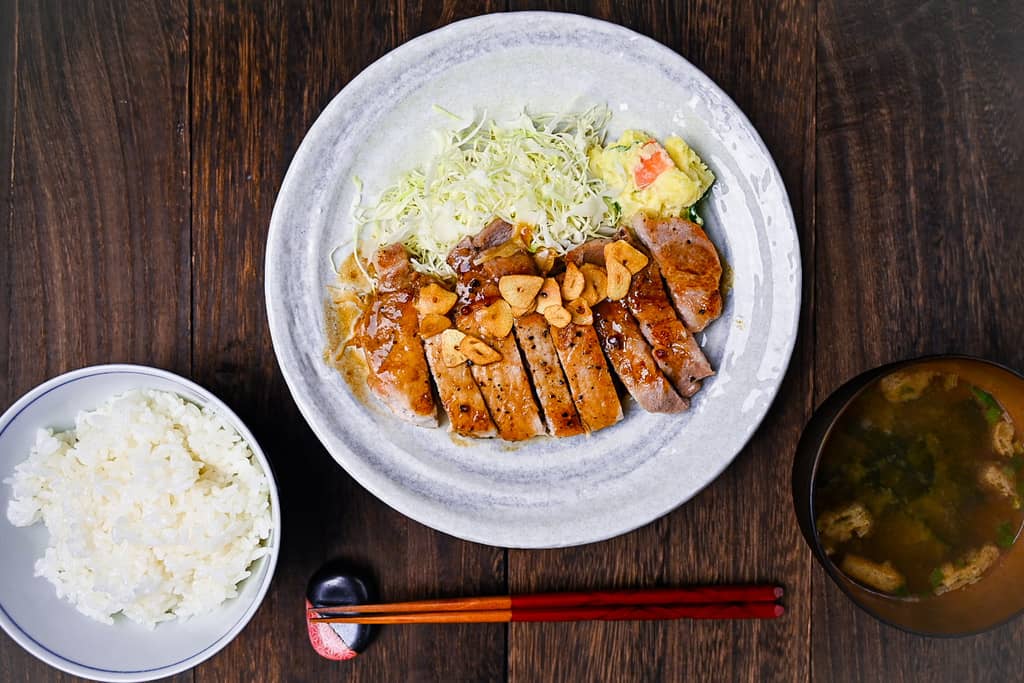
Originating in the 1950s from “Rairaiken” in Yokkaichi, Tonteki quickly became a hallmark dish of the region. While each place imparts its unique touch, the dish in Yokkaichi is often nicknamed “glove” because the deep cuts in the pork resemble a baseball glove when cooked.
For a dish to be recognized as Tonteki in Yokkaichi, it must meet specific standards:
- Thick, sautéed pork slices
- A rich, tangy sauce
- A garnish of garlic
- Accompanied by shredded cabbage
This dish is a symphony of flavors, yet its preparation is refreshingly straightforward. With a mere 20-minute investment, you can make a perfect meal for a quick lunch or a weekday dinner.

How I Developed This Recipe
As I worked to perfect the Tonteki recipe, I focused on perfecting the cooking technique for the pork. It was really important to get that balance right, so the pork is cooked perfectly but still nice and juicy. If I overcooked it, the meat would be tough and lack moisture.
I also put a lot of effort into developing the tonteki sauce, which I think is the best I can make.
My wife has even become a big fan of this dish and asks for it all the time. I hope you will love it too!
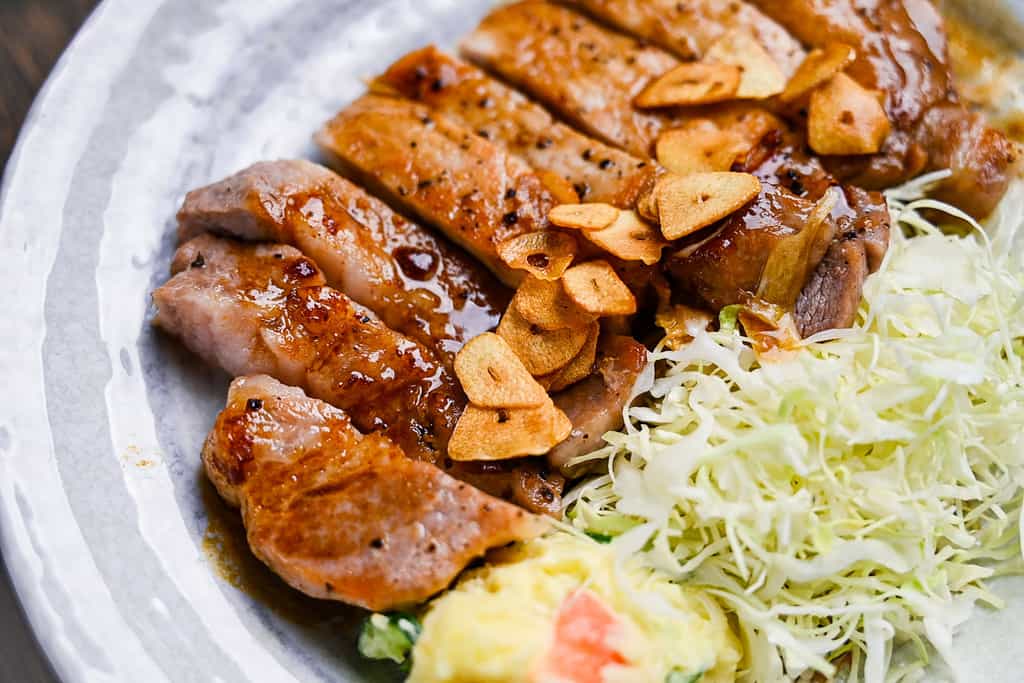
Ingredients & Substitution Ideas
- Boneless pork chops: For a genuine tonteki experience outside Japan, pork chops are the way to go. In Japan, loin and shoulder chops are the top picks due to their perfect blend of lean and fatty meat. Some restaurants even use pork medallions or different cuts, offering unique textures and flavors. Feel free to experiment with local pork cuts to find your preferred taste. Just remember, thick slices are vital to capturing tonteki’s essence!
- Garlic: What sets this recipe apart is the use of garlic-infused oil. Garlic slices are fried until golden and later added to the steak, providing a deep flavor and a satisfying crunch.
- Olive oil: While other oils can be used, olive oil is the top choice for this recipe.
- Green cabbage: Green onions are the preferred choice here, mainly because they will be shredded and consumed raw.
- Worcestershire sauce: This is a pivotal condiment, forming the backbone of the sauce.
- Soy sauce: Refer to my soy sauce guide for selecting the right soy sauce in Japanese cuisine.
- Mirin: When shopping for mirin, aim for “hon mirin” (本みりん) if possible.
- Honey and Unsalted butter: While not traditional in tonteki sauce, I’ve added butter and honey for depth, richness and sweetness.
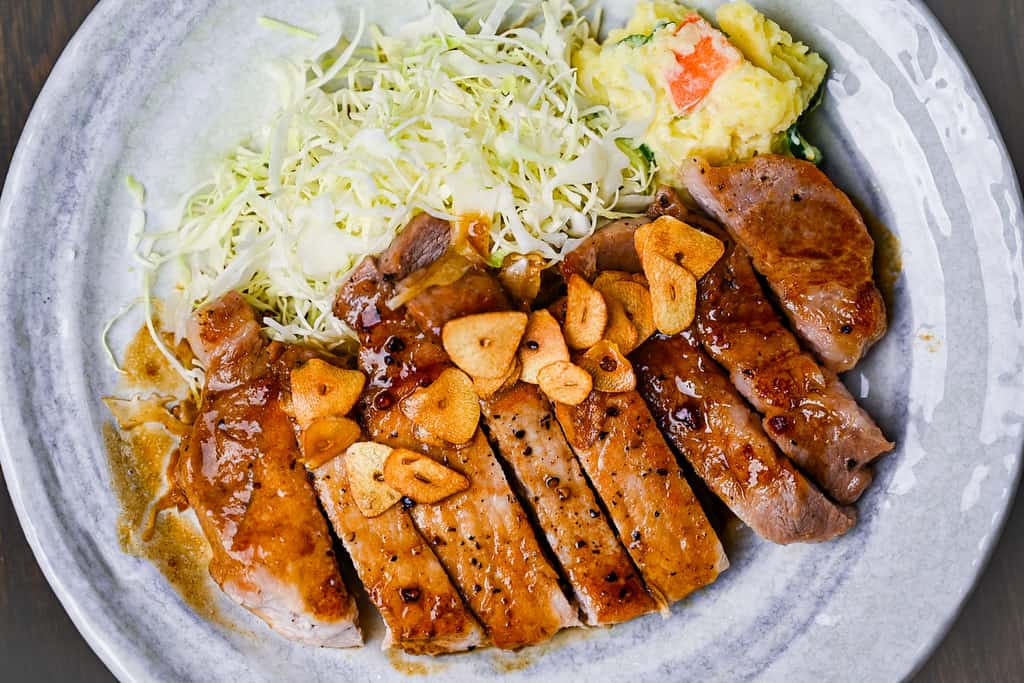
Visual Walkthrough & Tips
Here are my step-by-step instructions for how to make Tonteki at home. For ingredient quantities and simplified instructions, scroll down for the Printable Recipe Card below.
Start by cutting 3-4 slits through the fatty edge of the porks. Not only does this help prevent curling, but it also gives the pork the iconic “glove” shape it’s famous for!
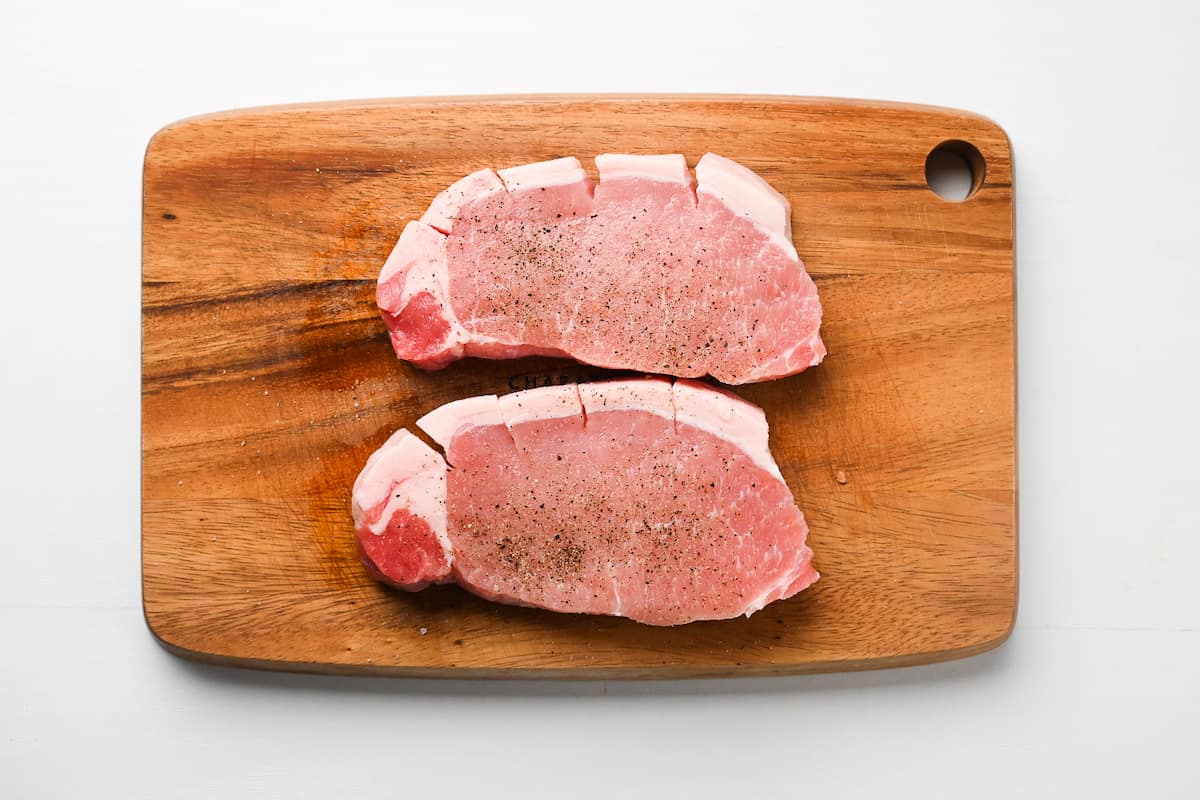
Sprinkle each side with a pinch of salt and pepper and set on the counter (not in the refrigerator) until it’s time to cook.
Heat a frying pan on medium-low and add olive oil. Once it’s hot, add thinly sliced garlic cloves.
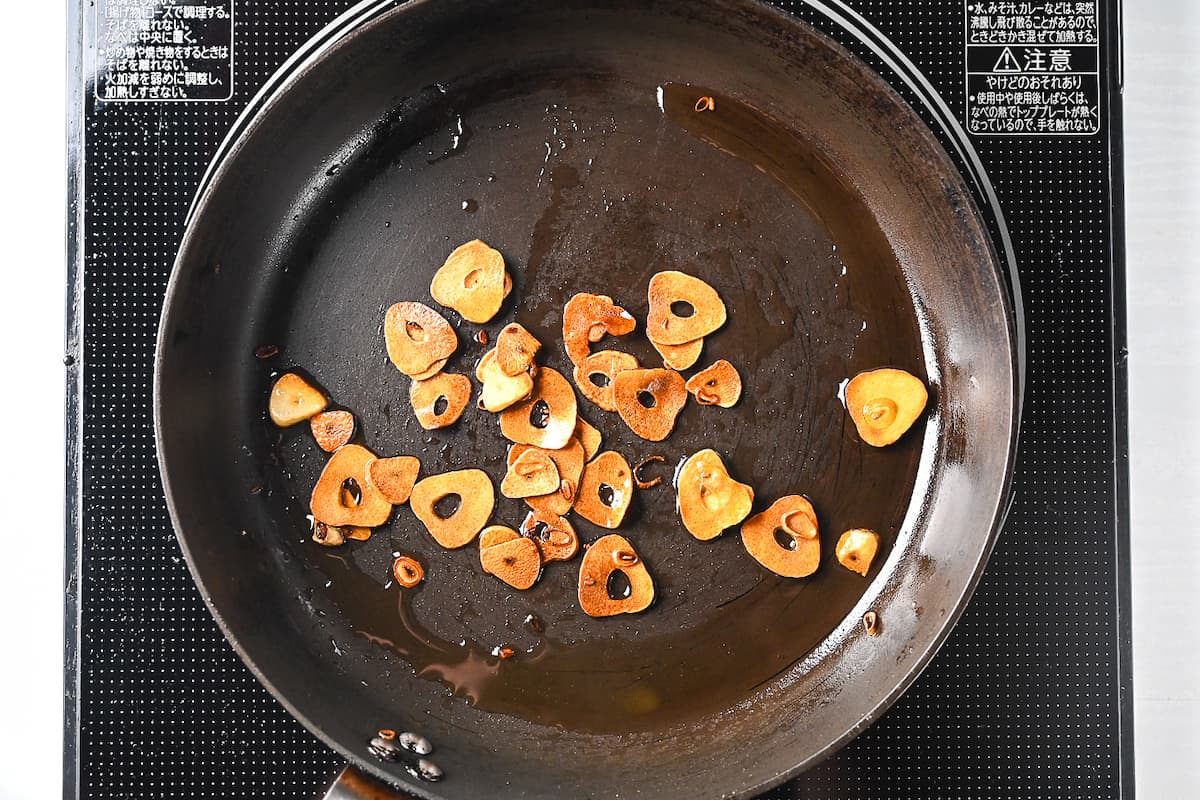
Turn the slices occasionally to ensure they’re evenly golden on both sides.
Once crispy, place the garlic chips on kitchen paper to absorb excess oil.
When taking the garlic chips out of the pan, be careful not to remove too much oil. We will use this garlic-infused oil to flavor the pork and sauce!
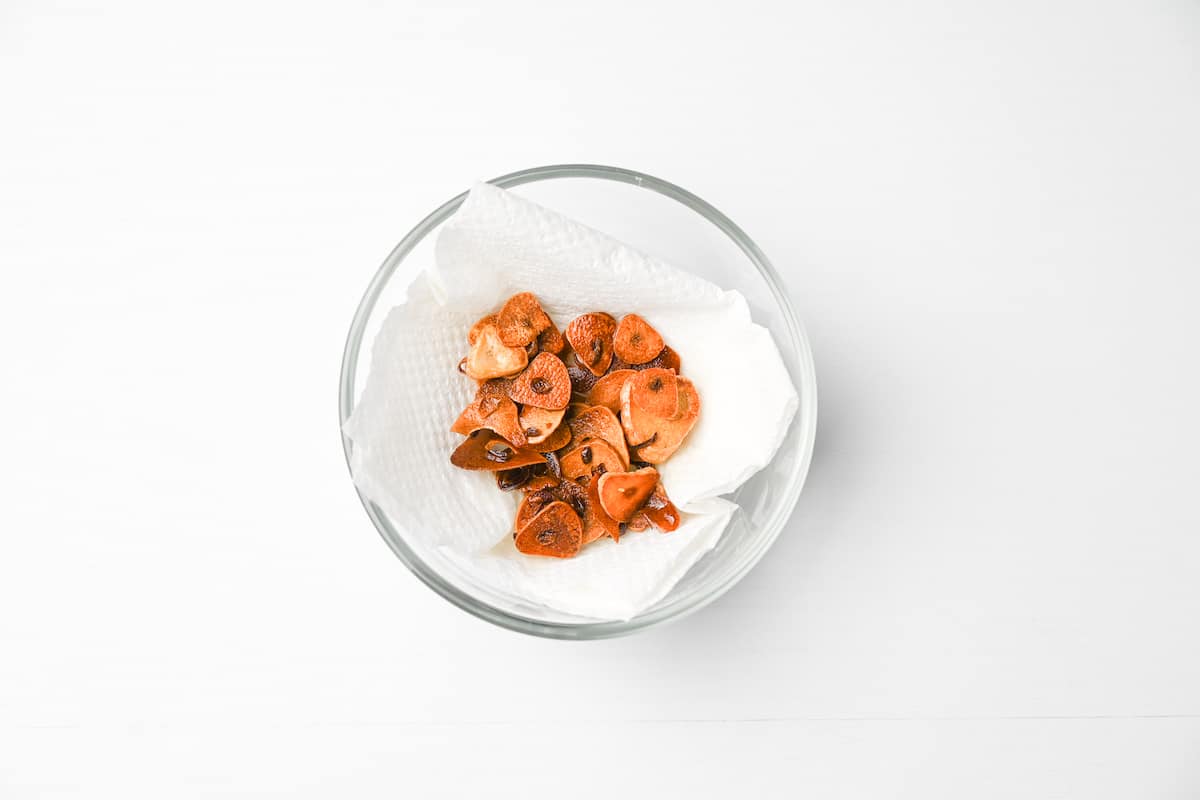
Using the same pan, add the pork and turn up the heat to medium. Place a lid over the top and fry for 3 minutes.
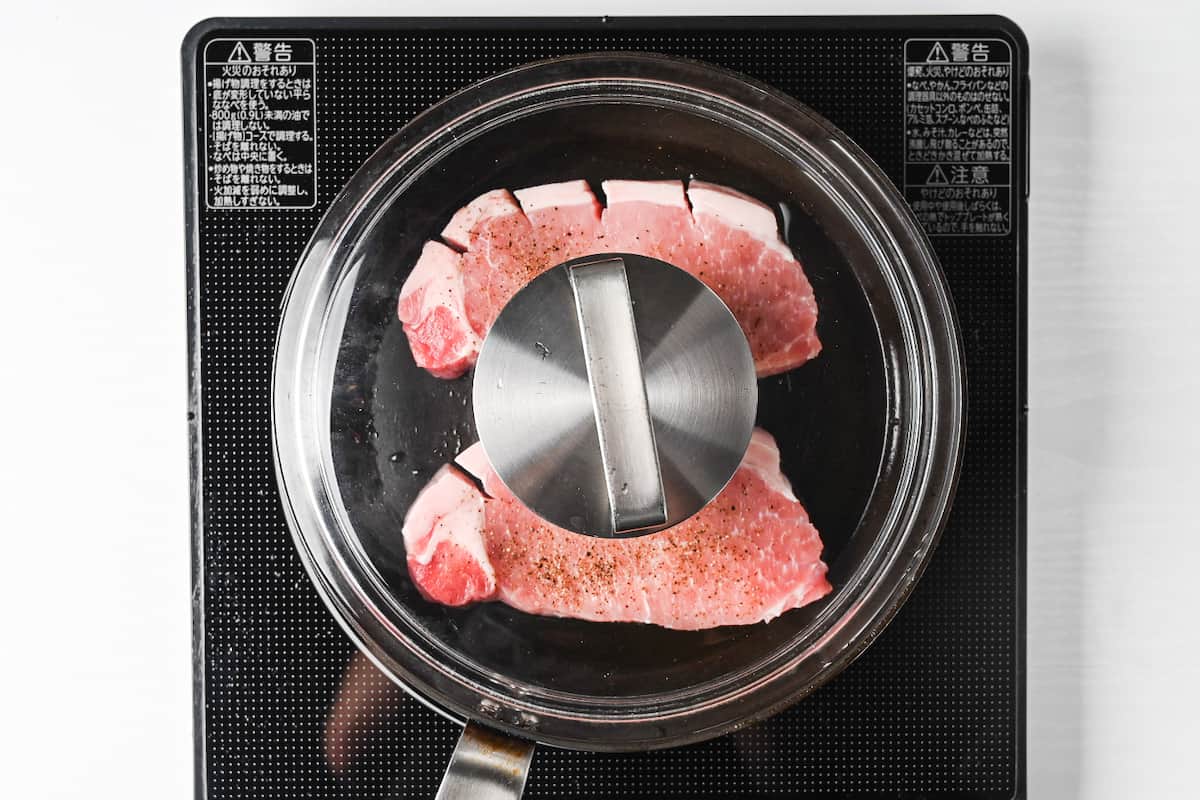
After 3 minutes, flip the pork over and cook the other side for another 3 minutes, again with the lid on. If your pork is particularly thick, it might need an extra minute or so on each side.

Once the pork is cooked all the way through, transfer to a plate and cover with aluminum foil. Rest until serving.
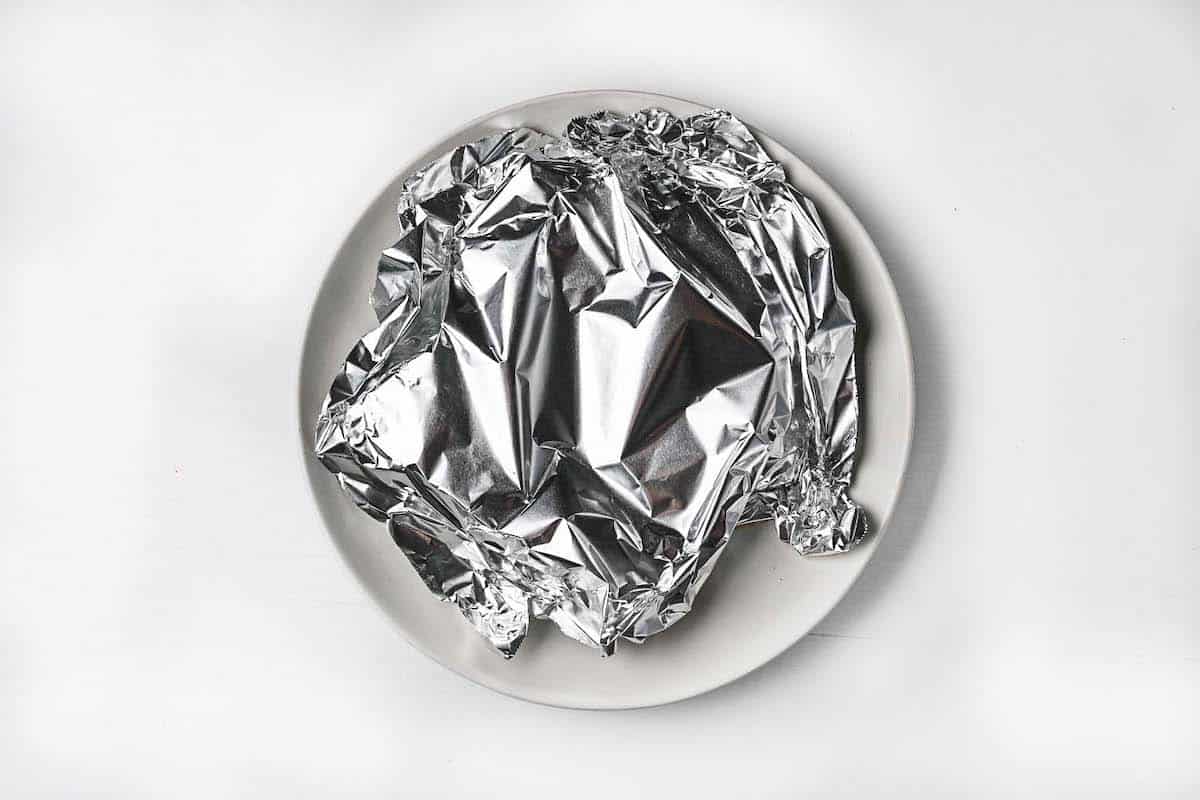
Using the same pan again, lower the heat and add the Worcestershire sauce, soy sauce, mirin, honey, and butter.
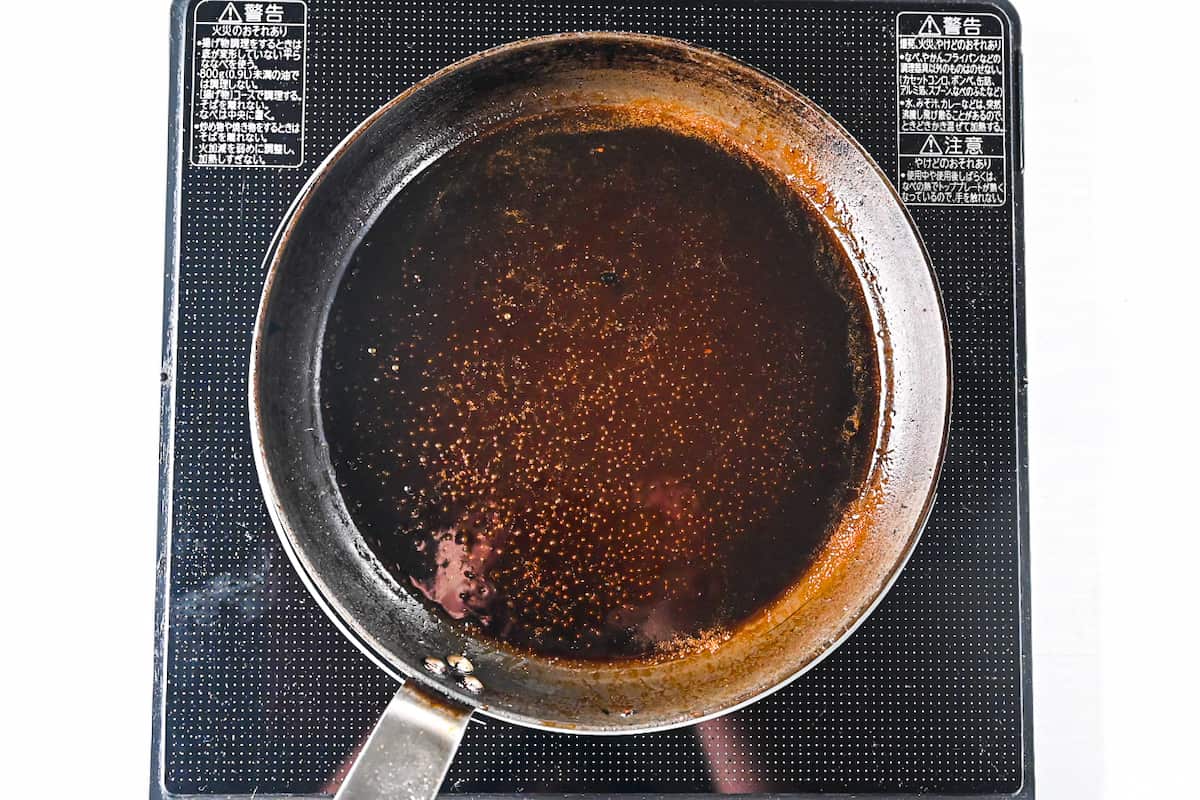
Cook until slightly thickened to a syrup-like consistency.
Cut the pork into thick slices.
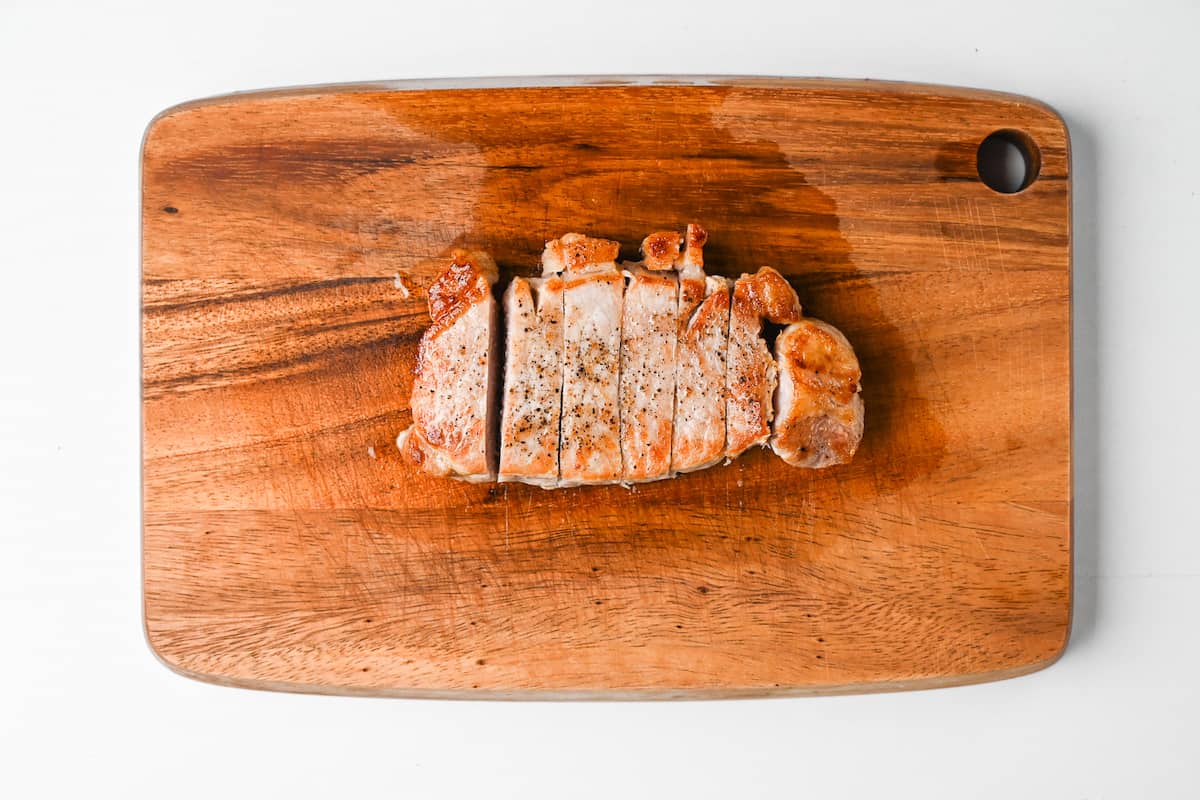
Place each sliced pork chop on a plate next to a heap of shredded cabbage and then drizzle generously with the homemade sauce. Top with garlic chips and enjoy!
Jump to Full Recipe Measurements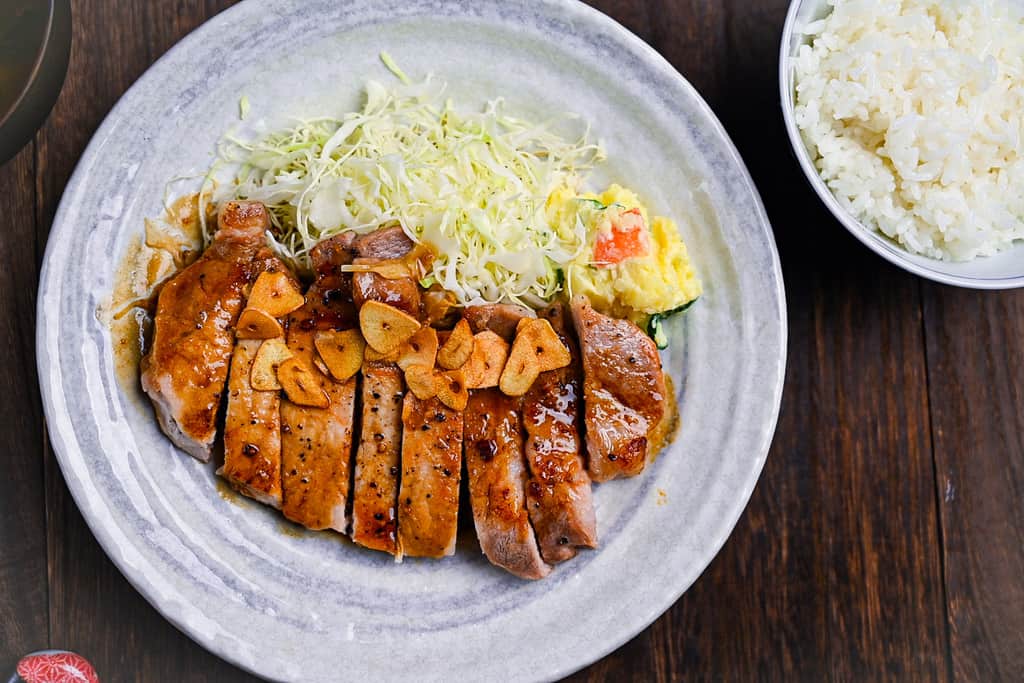
FAQ
The story goes that tonteki began in the 1950s at a Chinese restaurant called Rairaiken in Yokkaichi City, Mie Prefecture. Today, it remains a popular local dish loved by people all over Japan.
Tonteki and tonkatsu might sound similar, but they’re distinct dishes. While both are pork-based, tonkatsu is a deep-fried cutlet with a flour, egg, and panko breadcrumb coating. In contrast, tonteki is a pork chop steak without any batter or crust. The sauces also differ: tonteki sauce is sweet and rich, whereas tonkatsu sauce has a sweet-sour profile.
While both pork sauté (ポークソテー) and tonteki are pork dishes in Japan, their preparation and flavor profiles differ. Pork sauté is seasoned simply with salt and pepper, pan-fried, and often paired with Western-style sauces like demi-glace, ketchup, or mustard. Tonteki, on the other hand, is characterized by its unique Japanese sauce, blending ingredients like Worcestershire sauce, soy sauce, and garlic. Though pork sauté might be referred to as pork chap (ポークチャップ) or pork steak (ポークステーキ), tonteki remains a uniquely flavorful take on pork steak.
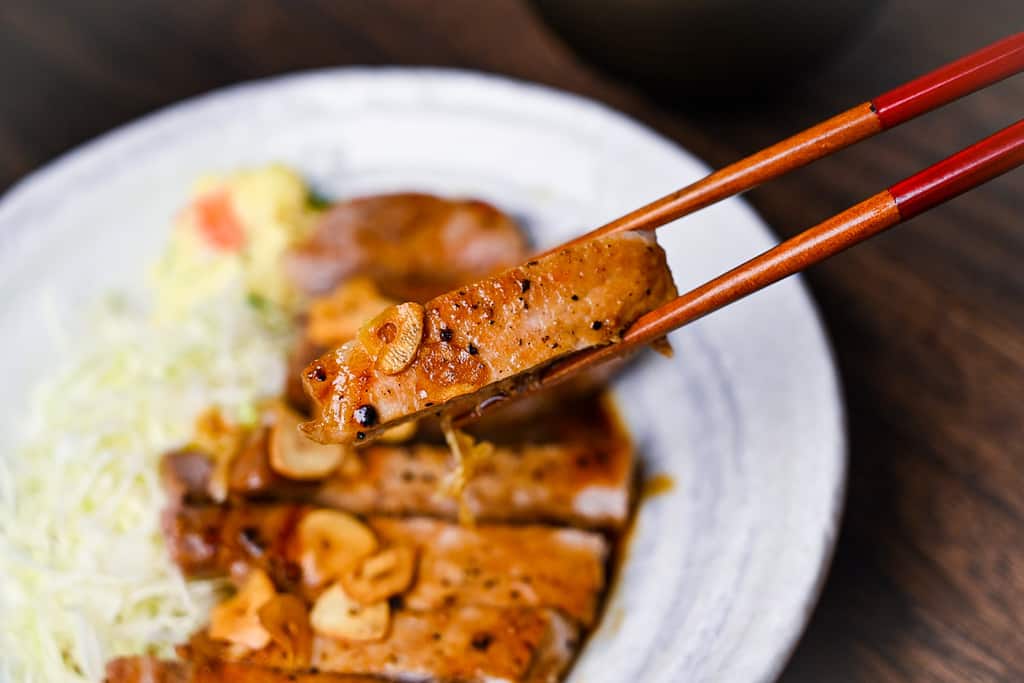
I hope you enjoy this Tonteki recipe! If you try it out, I’d really appreciate it if you could spare a moment to let me know what you thought by giving a review and star rating in the comments below. It’s also helpful to share any adjustments you made to the recipe with our other readers. Thank you!
More Japanese Pork Recipes
- Pork Chop Teriyaki with Lemon
- Subuta (Japanese Style Sweet And Sour Pork)
- Buta no Shogayaki (Japanese Ginger Pork)
- Katsudon (Japanese Pork Cutlet Bowl)
Want more inspiration? Explore my Pork Recipe Roundup Post for a carefully selected collection of tasty recipe ideas to spark your next meal!
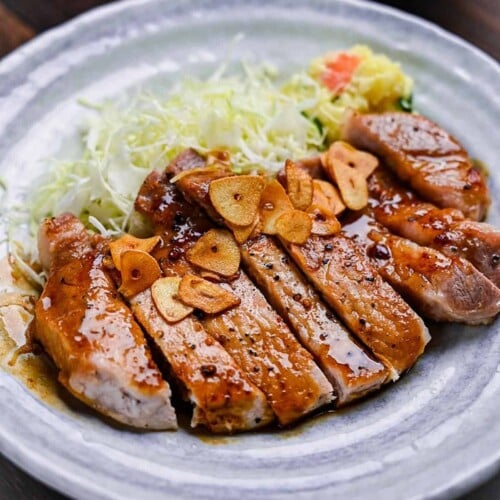
Tonteki (Japanese Pork Chop Steak)
Ingredients
- 3 cloves garlic peeled and thinly sliced
- 2 tbsp olive oil
- 250 g boneless pork chop
- salt and pepper
- 100 g green cabbage shredded
Sauce
- 2 tbsp Worcestershire sauce
- 1 tbsp Japanese soy sauce (koikuchi shoyu)
- 1 tbsp mirin
- 1 tsp honey
- 1 tsp butter
My recommended brands of ingredients and seasonings can be found in my Japanese pantry guide.
Can’t find certain Japanese ingredients? See my substitution guide here.
Instructions
- Take 250 g boneless pork chop and cut 3-4 slits in the fatty edge. Sprinkle with a pinch of salt and pepper on both sides and set aside for later.

- Next, heat up a frying pan on a medium low and once hot, add 2 tbsp olive oil and 3 cloves garlic (thinly sliced). Fry until golden and crispy.

- Once done, scoop the garlic chips out of the pan using a mesh spoon if possible, and place onto a paper towel to allow the excess oil to drain off. Leave as much oil in the pan as possible because we'll use it again.

- Take the pork chops and place them in the pan. Increase the heat to medium and place a lid on top. Fry for 3 minutes.

- Turn the heat down to medium-low and flip the pork chops over. Continue to cook for 3 minutes, again with the lid on. (It might need a few minutes extra if the pork is particularly thick.)

- Transfer to a warm plate and cover with foil to rest and stay warm.

- In the same pan, add 2 tbsp Worcestershire sauce, 1 tbsp Japanese soy sauce (koikuchi shoyu), 1 tbsp mirin, 1 tsp honey and 1 tsp butter. Simmer on a low heat while stirring until thickened to a syrup-like consistency.

- Cut the pork into thick slices.

- Divide 100 g green cabbage between each serving plate and lay the pork chops next to it. Drizzle the sauce from the pan generously over the pork chops (you can also pour some over the cabbage and use it as a dressing) and top with the garlic chips.

- Enjoy!
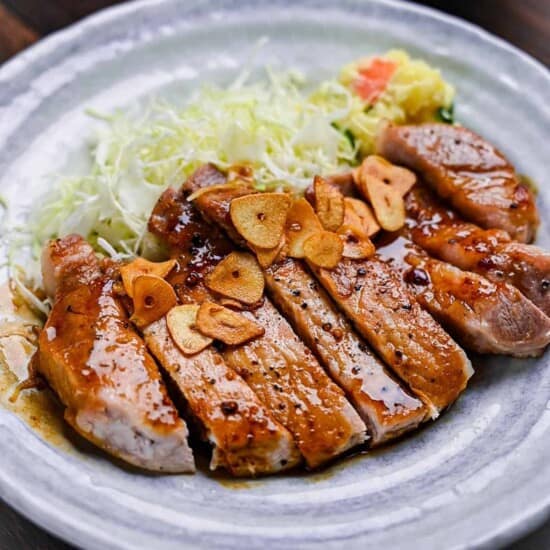



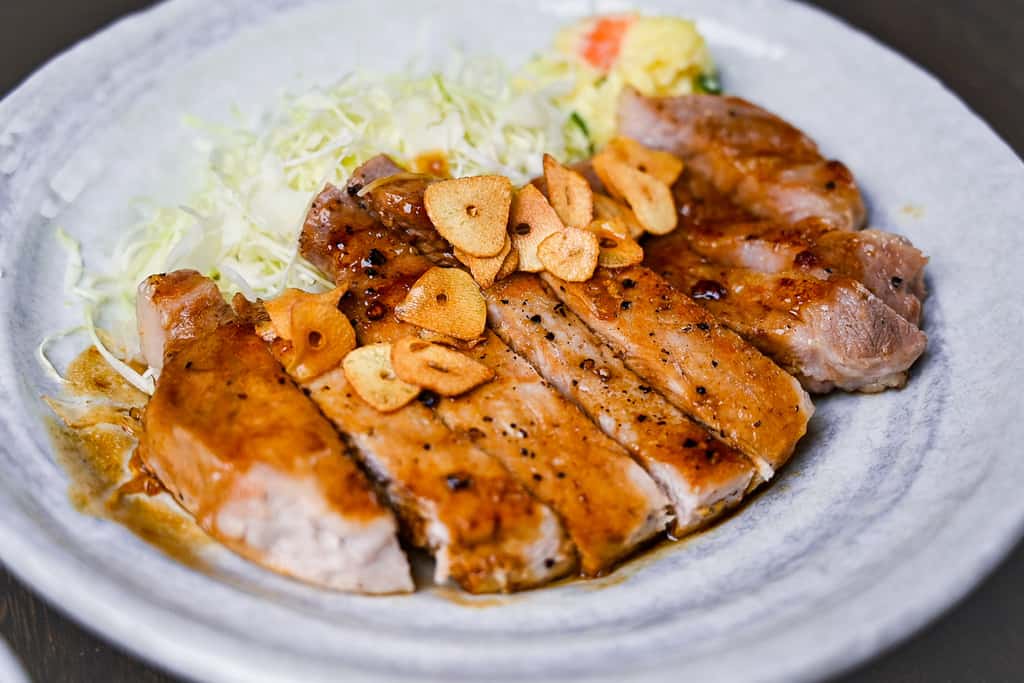
This was really good! I was out of honey so I substituted ketchup. I’m going to make it again
Hi Kyle,
Thank you for the comment and generous rating! I’m glad you enjoyed the recipe!
Delicious
Thank you Nadine!
I have made this twice now, it’s really very nice. I use pork shoulder steaks, so they always require longer cooking. Around 6 to 7 minutes on each side. The sauce itself is delicious, I would make some just to go on plain noodles or rice.
Hi Lauran,
Thank you so much.
You’re right, thicker steaks need longer cooking but still work perfectly for this dish.
Glad you enjoyed the recipe!